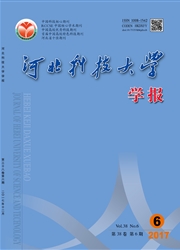

 中文摘要:
中文摘要:
光波导器件在许多领域都有着广泛的应用和良好的发展前景。而波导器件表面粗糙度影响传输光损耗和环形腔Q值,制约光波导器件的发展和应用。目前常用波导器件表面和侧壁光滑化方法有热氧化法、激光束法和氢退火法,其中氢退火法有较好的光滑化效果,但对于氢退火工艺的机理并不清楚,无法进一步优化实验参数,达到最佳实验效果。在对上述内容进行综述的基础上,通过Materials Studio仿真分析,初步研究了退火机理,基于仿真研究结果,分析氢气环境对退火过程的意义,为应用氢退火工艺对波导器件光滑化实验提供理论指导。
 英文摘要:
英文摘要:
Optical waveguide devices are widely used in many fields and have good development prospects. But surface rough-ness of waveguide device induces a passive effect on the light transmission loss and the Q value of ring cavity, which restricts the development and applications of optical waveguide devices. Currently, the common used surface and side wall smoothing methods for waveguide devices are the thermal oxidation method, laser beam method, and hydrogen annealing method, and the surface hydrogen annealing method has better smoothing effect. However, the mechanism of hydrogen annealing method is still not clear so far , thus the experimental parameters cannot be further optimized to obtain optimal experimental result. Based on the review of the contents mentioned above, the hydrogen annealing mechanism is primarily studied through the simulation analysis by Materials Studio, which provides theoretical foundation and guidance for smoothing of waveguide device by hydro-gen annealing technology.
 同期刊论文项目
同期刊论文项目
 同项目期刊论文
同项目期刊论文
 Modified Fowler–Nordheim tunnelling for modeling charge injection intoSi3N4 in an Al/Si3N4/Si struct
Modified Fowler–Nordheim tunnelling for modeling charge injection intoSi3N4 in an Al/Si3N4/Si struct Wide dynamic range experiments in a resonator fiber optic gyro based on closed-loop frequency lockin
Wide dynamic range experiments in a resonator fiber optic gyro based on closed-loop frequency lockin Abnormal visible luminescence mechanism of Tb3+-Yb3+ codoped SiO2-Al2O3-CaF2 glass studied by time-r
Abnormal visible luminescence mechanism of Tb3+-Yb3+ codoped SiO2-Al2O3-CaF2 glass studied by time-r Facile synthesis of core-shell structured PANI-Co3O4 nanocomposites with superior electrochemical pe
Facile synthesis of core-shell structured PANI-Co3O4 nanocomposites with superior electrochemical pe Plasma-Induced Wafer-Scale Self-Assembly of Silver Nanoparticles and Application to Biochemical Sens
Plasma-Induced Wafer-Scale Self-Assembly of Silver Nanoparticles and Application to Biochemical Sens Humidity and particulate testing of a high-Q microcavity packaging comprising a UV-curable polymer a
Humidity and particulate testing of a high-Q microcavity packaging comprising a UV-curable polymer a 期刊信息
期刊信息
